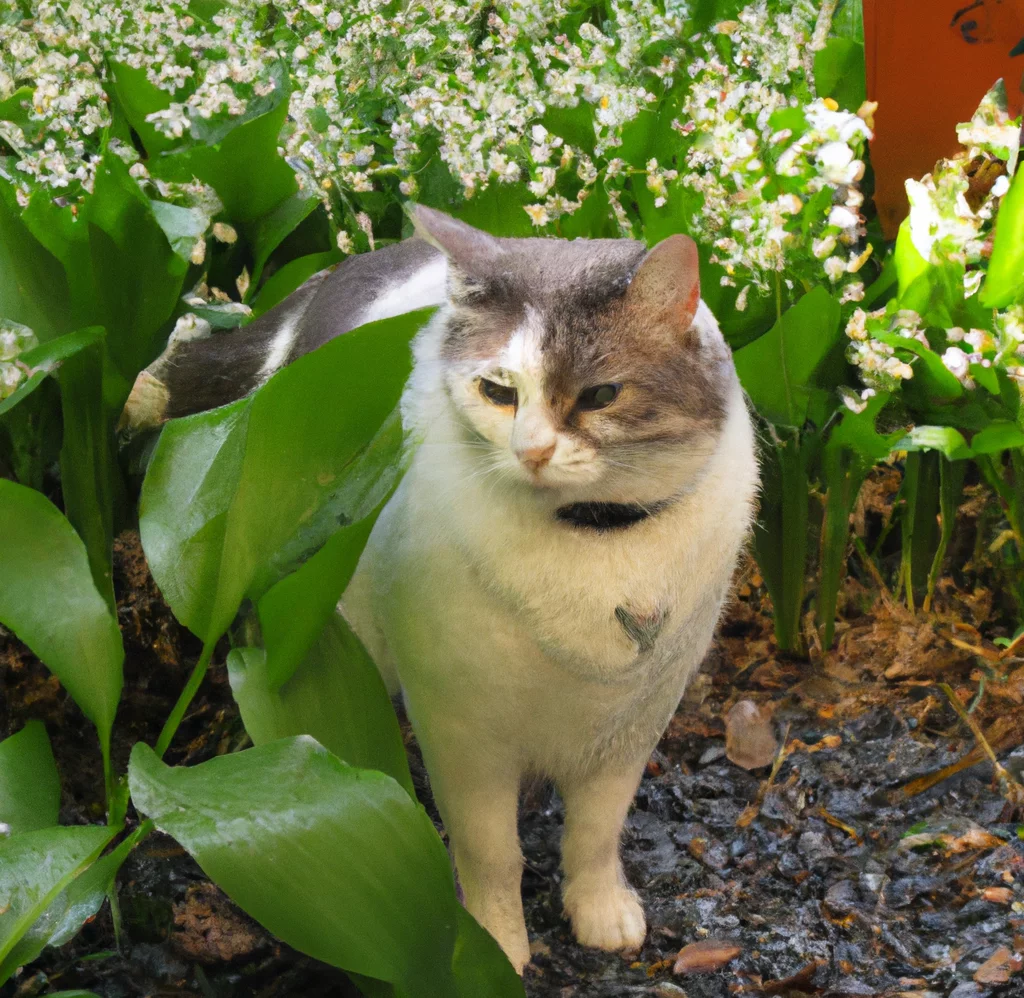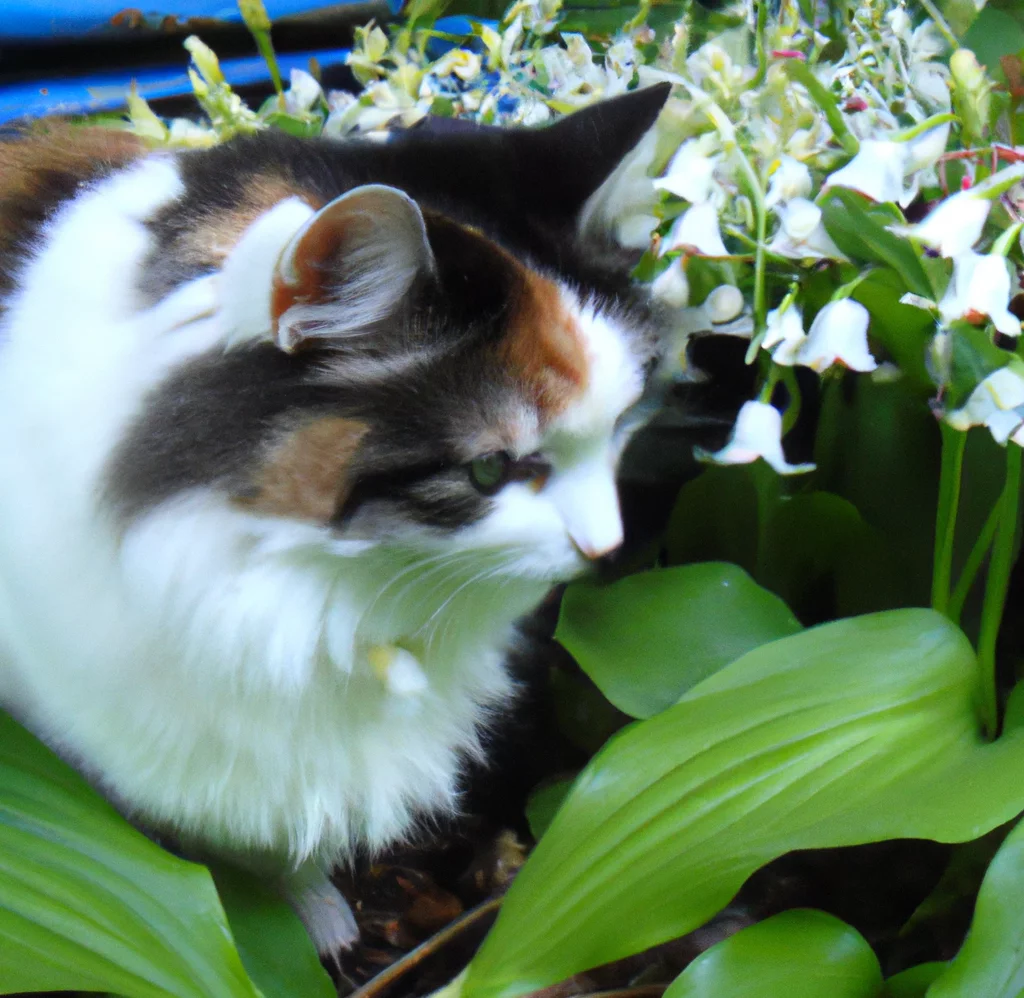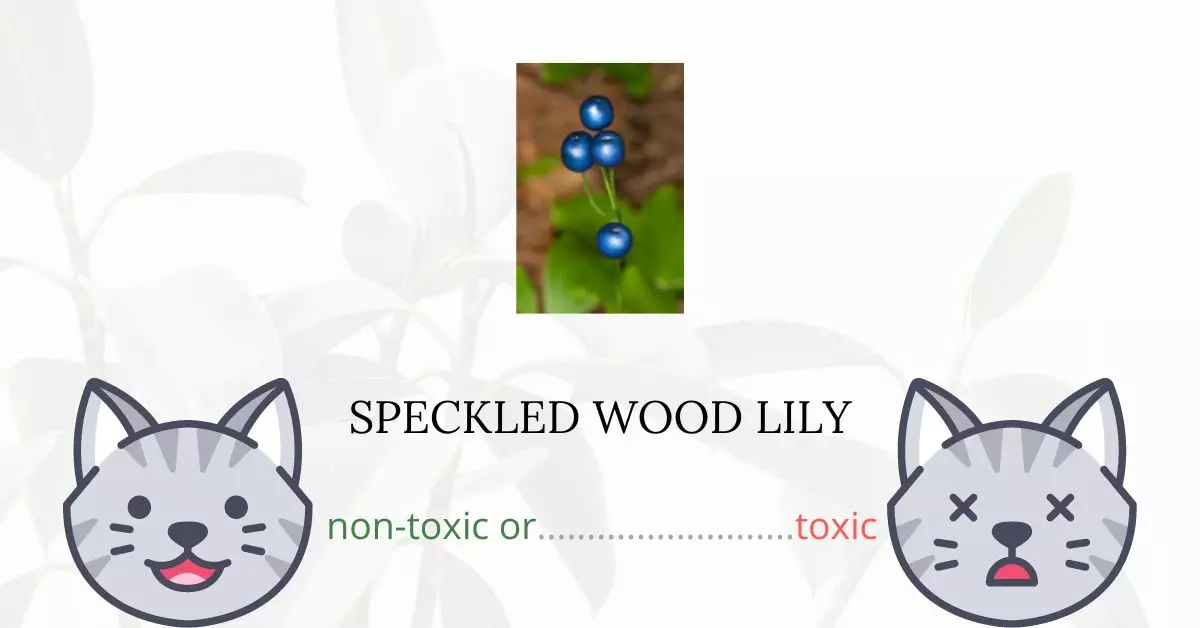No, the Speckled Wood Lily or White Clintonia is not toxic for cats.
This article has been crafted in collaboration with a team of experienced DVMs (doctors of veterinary medicine). Thanks to their expert contributions, we can confidently provide accurate and up-to-date information regarding the potential risks various plants pose, with a focus on the Speckled Wood Lily in this context. Our conclusions are also based on thorough research from high-authority websites such as the ASPCA (American Society for the Prevention of Cruelty to Animals) and PetMD.
Thus, if your feline companion has come into contact with this plant, you can be assured of its safety.
Can Cats Eat Speckled Wood Lily or White Clintonia?

While the speckled wood lily is not poisonous to cats, it is not advisable to be included in a cat’s diet. You must monitor your cat and prevent them from eating plants, whether it is toxic or not.
Plants shouldn’t be a part of a cat’s regular diet because cats are carnivores. Cats lack the enzymes needed to completely metabolize plant materials. Because cats lack these enzymes, too much eating of plants can lead to gastrointestinal issues like indigestion.
Additionally, certain cats may react differently to different plants. Specific plants may cause allergic reactions in hypersensitive cats. Always consult a veterinarian if you are uncertain about something.
What is Speckled Wood Lily or White Clintonia?

A perennial herbaceous plant, the speckled white lily spreads via underground rhizomes. A plant has two to four dark green leaves that are each 18 to 30 cm long and 4.5 to 8 cm wide, and it is between 27 and 60 cm tall.
Six tepals and six stamens are present in each flower the plant produces. These tiny flowers, which bloom from late spring to early summer, look like miniature disco balls in a wooded area. Tepals are typically speckled with purplish brown or green and are either white or greenish white. The plant also produces black (or sometimes ultramarine blue) berries that are 6 to 8 mm long and have two to four seeds each.
Scientifically, the speckled wood lily is known as Clintonia umbellulata. It is also known for its common names such as Clinton’s lily, and white clintonia.
Keeping Cats Away From Speckled Wood Lily or White Clintonia

Planting a scaredy cat plant or Coleus canina will drive cats away from your gardens. It emits a unique skunk smell that gets worse when someone bumps into or bruises the plant.
Another deterring method you can do is building fences and placing safety nets around your plants. You can also use chicken wires and repurposed chopsticks as barriers around your plants.
Additionally, you can use noise to keep your cats away. Try building a noisy contraption out of marbles or pebbles that will jar when a cat climbs a fence. Alternately, use wind chimes or a bell that will ring when a cat makes a vibration.
Plants to Avoid For Your Cats
If you are a cat owner and unsure if the plants growing in your yard are harmful to your cats, check out this list of toxic plants for cats. You can also check our list of non-toxic plants for cats.





